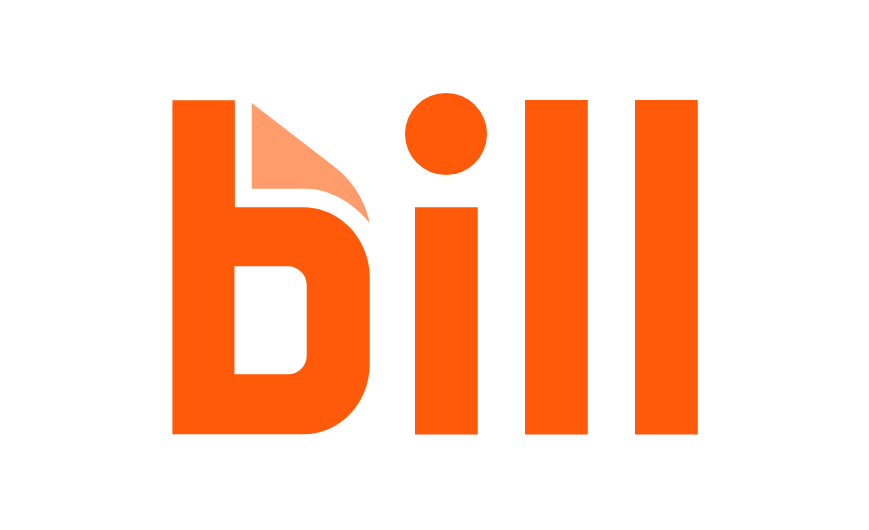Given the great success and ease of use of the Champions one-piece implant system, the question of why the development of a two-piece implant system was necessary has been raised. More than 2,000 dentists and clinics have found the one-piece system provides great results, particularly when used with Prep-Caps, which compensate for any insertion divergences. So, why the addition of a two-piece system?
While it is true that the one-piece Champions implant system represents a major design breakthrough, the development of the new two-piece Champions (R)Evolution allows the implants to be used on those patients who cannot be treated with the one-piece system (in some dental offices the percentage of patients whose condition is unsuitable for treatment with the one-piece system may reach as high as 20-30 percent).
Additionally, some dental surgeons, for whom temporary prosthodontic restorations are not an area of expertise, will find it easier to work with the two-piece implants, which often make these temporary restorations unnecessary.
embedImagecenter("Imagecenter_1_459",459, "large");
The two-piece Champions offer all the same advantages provided by the one-piece system. Produced in Germany of the highest quality materials, the new system remains affordable for dental offices, dental technicians and, most of all, for our patients!
While traditional two-piece implant systems have had problems with micro-gaps, which are vulnerable to bacterial penetration, the two-piece Champions (R)Evolution solves this problem with our newly developed, patent-pending inner cone with its rotation-proof “Hex-adapter.”
The implant has a micro-close gap of only about 0.6 µm. In addition, these two-piece implant types are suitable for the minimally invasive method of implantation (MIMI procedure), which is also used with our one-piece implants.
With this method, only a few dental tools are necessary for implantation, greatly reducing dental office expenses. The temporary prosthodontic restoration, which is necessary for one-piece implants for single teeth in the first two to eight weeks post surgery, is no longer absolutely necessary when two-piece implants are inserted.
The success story of the non-traumatic key-hole surgery MIMI will continue. Dentists will be able to incorporate the implantation with this Champions (R)Evolution system in their day-to-day work in dental offices.
Surgical procedure
After taking the implant out of the box, this two-piece implant type — like the one-piece Champions implant — can be inserted without the need to touch the sterile implant. Thus, a contamination of the implant surface is avoided.
However, we do not just insert the implant itself, but also the integrated “Gingiva-Shuttle,” which is delivered with the implant and is tightly screwed to the implant at a torque of 5–10 Ncm. In this way, there is there is no risk of contamination inside the screw.
When inserting the Champions (R)Evolution implant in practice, you implant the “Gingiva Shuttle” and … that’s all! There is no closing cap where you see bleeding or gingiva-contaminated inner threads.
It is generally recommended that you should always begin to implant with a 3.5 mm-diameter implant to achieve primary stability, even if an implant with a bigger diameter might eventually be suitable for the bone width.
From a bio-physiological point of view, it is not recommended that you begin to implant with a 4.5 mm diameter implant or a 5.5 mm-diameter implant right away.
The 4.5 mm-diameter or 5.5 mm-diameter Champions (R)Evolution implants should only be inserted if primary stability cannot be achieved with a 3.5 mm-diameter Champion at a torque of at least of 30 Ncm (in the D4 bone or sometimes in the D3 bone).
Fortunately, incisions of the mucosa or bone augmentation can usually be avoided when you perform an implantation according to the MIMI procedure.
However, this does not mean that an incision of the mucosa, an open or closed sinus lift or a bone augmentation will never have to be performed! Additionally, other healing caps than those that are delivered with the implant (with a height of 3 mm) are available.
Prosthodontic procedure
Usually, some six weeks post-surgery, you click the impression coping to the “Gingiva-Shuttle,“ which stays in the impression material. With a gingiva mask and a (two-part) laboratory analog, the master model is created by a dental laboratory.
The abutments for our implant system have the following design: the abutment have an inner conus with an integrated patent-pending “Hexadapter,“ which ensures rotation protection. The platform with the inner conus is always the same for each diameter, whether you insert a 3.5 mm-diameter (R)Evolution implant, a 4.5 mm-diameter one or a 5.5 mm-diameter one.
Conclusion
One of the best periimplantitis prophylaxes is an intra-operative flapless implant treatment without a mucoperiosteal (especially buccal) flap.
The very small micro-close gap of less than 0.6 µm and the screw and abutment design (“Platform Switching“) have proven successful for years.
Moreover, due to the fact that the total treatment costs are reduced by 50 percent, more patients can afford this implantation treatment. High prices and low-quality would mean fewer patients!
The Champions (R)Evolution implant is one of the first two-piece implants that can be inserted according to the painless and uncomplicated “key-hole“ MIMI implantation method.
MIMI will remain the implantation method of the future. This two-piece implant type will (r)evolutionize the daily routine of dentists and dental technicians!
Note: This article was published in Implant Tribune U.S. Edition, Vo.7, No. 1, January 2012.
About the author
Armin Nedjat, DDS, is the general manager and founder of Champions Implants GmbH in Germany. Nedjat had his own private clinic from 1994 to 2010 near Frankfurt am Main. He has been a specialist in Implantology (DGZI) since 1999 and an ICOI diplomat since 2000. Nedjat has inserted more than 20,000 implants, including prosthodontic work, and has received training from many dental institutions in the world (including Harvard University in Boston, Jumeira Dental Clinic Dubai, University in Paris, France). Between 1994 and 2006, he developed Champions Implants system, and he has been the CEO of Champions Implants since 2006.
NEW YORK, N.Y., USA: The Smiles in the Sun Seminar 2013 Program has combined several of the most popular speakers in dentistry beginning with Dr. Jack Hahn,...
Dentsply Sirona is ready for AO 2024 with a full line-up for our Inspiration TALKS at the Corporate Forum and the latest product and technology solutions ...
The use and acceptability of implants today is considered both routine and highly predictable. With that, people more than ever before are considering the ...
The dental microscope is an outstanding tool. Every general dentist should consider incorporating the ability to have multiple magnifications in his or her ...
In the ever-evolving landscape of dentistry, staying ahead requires embracing innovative technologies that enhance patient care and elevate practice ...
WASHINGTON, D.C., BOISE, Idaho, & PRESCOTT, Ariz.: While some dentists will probably be disappointed about the presidential election results, two ...
As a part of its mission to always provide dentists with only the best solutions for improved patient care, ContacEZ continues to refine, improve and expand...
ALBERTSON, N.Y., USA: Project Accessible Oral Health at The Viscardi Center, a global public-private partnership that aims to improve access to oral ...
Materialise Dental announced the appointment of John Thomas as general manager for the United States and Canada. Thomas brings over 20 years of experience ...
MELVILLE, N.Y. USA: On Monday health care products and service provider Henry Schein has launched an all-in-one solution for dentists to treat and monitor ...
Live webinar
Mon. 22 April 2024
10:00 AM EST (New York)
Prof. Dr. Erdem Kilic, Prof. Dr. Kerem Kilic
Live webinar
Tue. 23 April 2024
1:00 PM EST (New York)
Live webinar
Wed. 24 April 2024
8:00 AM EST (New York)
Dr. Yin Ci Lee BDS (PIDC), MFDS RCS, DClinDent Prosthodontics, Dr. Ghida Lawand BDS, MSc, Dr. Oon Take Yeoh, Dr. Edward Chaoho Chien DDS, DScD
Live webinar
Wed. 24 April 2024
1:00 PM EST (New York)
Live webinar
Fri. 26 April 2024
12:00 PM EST (New York)
Live webinar
Mon. 29 April 2024
12:30 PM EST (New York)
Prof. Roland Frankenberger Univ.-Prof. Dr. med. dent.
Live webinar
Tue. 30 April 2024
1:00 PM EST (New York)



 Austria / Österreich
Austria / Österreich
 Bosnia and Herzegovina / Босна и Херцеговина
Bosnia and Herzegovina / Босна и Херцеговина
 Bulgaria / България
Bulgaria / България
 Croatia / Hrvatska
Croatia / Hrvatska
 Czech Republic & Slovakia / Česká republika & Slovensko
Czech Republic & Slovakia / Česká republika & Slovensko
 France / France
France / France
 Germany / Deutschland
Germany / Deutschland
 Greece / ΕΛΛΑΔΑ
Greece / ΕΛΛΑΔΑ
 Italy / Italia
Italy / Italia
 Netherlands / Nederland
Netherlands / Nederland
 Nordic / Nordic
Nordic / Nordic
 Poland / Polska
Poland / Polska
 Portugal / Portugal
Portugal / Portugal
 Romania & Moldova / România & Moldova
Romania & Moldova / România & Moldova
 Slovenia / Slovenija
Slovenia / Slovenija
 Serbia & Montenegro / Србија и Црна Гора
Serbia & Montenegro / Србија и Црна Гора
 Spain / España
Spain / España
 Switzerland / Schweiz
Switzerland / Schweiz
 Turkey / Türkiye
Turkey / Türkiye
 UK & Ireland / UK & Ireland
UK & Ireland / UK & Ireland
 International / International
International / International
 Brazil / Brasil
Brazil / Brasil
 Canada / Canada
Canada / Canada
 Latin America / Latinoamérica
Latin America / Latinoamérica
 China / 中国
China / 中国
 India / भारत गणराज्य
India / भारत गणराज्य
 Japan / 日本
Japan / 日本
 Pakistan / Pākistān
Pakistan / Pākistān
 Vietnam / Việt Nam
Vietnam / Việt Nam
 ASEAN / ASEAN
ASEAN / ASEAN
 Israel / מְדִינַת יִשְׂרָאֵל
Israel / מְדִינַת יִשְׂרָאֵל
 Algeria, Morocco & Tunisia / الجزائر والمغرب وتونس
Algeria, Morocco & Tunisia / الجزائر والمغرب وتونس
 Middle East / Middle East
Middle East / Middle East
:sharpen(level=0):output(format=jpeg)/up/dt/2024/04/web_Bassi.jpg)
:sharpen(level=0):output(format=jpeg)/up/dt/2024/04/web_Munce.jpg)
:sharpen(level=0):output(format=jpeg)/up/dt/2024/04/web_Seiler.jpg)
:sharpen(level=0):output(format=jpeg)/up/dt/2024/04/Study-points-to-lack-of-formal-education-on-cannabis-in-dentistry.jpg)
:sharpen(level=0):output(format=jpeg)/up/dt/2024/04/Immediate-full-arch-zirconia-implant-therapy-utilising-the-power-of-robotic-assistance-and-digital-scanning_Fig-1-preophoto_title.jpg)












:sharpen(level=0):output(format=png)/up/dt/2024/02/vVARDIS_Logo__BIOMIMETIC-DENTAL-SCIENCE_cropped.png)
:sharpen(level=0):output(format=png)/up/dt/2013/01/Amann-Girrbach_Logo_SZ_RGB_neg.png)
:sharpen(level=0):output(format=png)/up/dt/2013/04/Dentsply-Sirona.png)
:sharpen(level=0):output(format=png)/up/dt/2014/02/3shape.png)
:sharpen(level=0):output(format=jpeg)/up/dt/2010/02/logo-3DISC-et-baseline-fond-blanc.jpg)
:sharpen(level=0):output(format=png)/up/dt/2024/01/UnionTech-Logo-Hub.png)
:sharpen(level=0):output(format=jpeg)/up/dt/e-papers/330729/1.jpg)
:sharpen(level=0):output(format=jpeg)/up/dt/e-papers/330727/1.jpg)
:sharpen(level=0):output(format=jpeg)/up/dt/e-papers/330725/1.jpg)
:sharpen(level=0):output(format=jpeg)/up/dt/e-papers/325039/1.jpg)
:sharpen(level=0):output(format=jpeg)/up/dt/e-papers/325007/1.jpg)
:sharpen(level=0):output(format=jpeg)/up/dt/e-papers/313543/1.jpg)
:sharpen(level=0):output(format=jpeg)/up/dt/2017/01/40a5907ab10f62299a1e63b7a1b7687d.jpg)

:sharpen(level=0):output(format=jpeg)/up/dt/2024/04/web_Bassi.jpg)
:sharpen(level=0):output(format=gif)/wp-content/themes/dt/images/no-user.gif)
:sharpen(level=0):output(format=jpeg)/up/dt/2013/01/c184469a298bf876709b7fbcc79ab78f.jpg)
:sharpen(level=0):output(format=jpeg)/up/dt/2024/03/web_DentsplySirona.jpg)
:sharpen(level=0):output(format=jpeg)/up/dt/2010/11/5f55afb8c09a087b683db8f3b37e6802.jpg)
:sharpen(level=0):output(format=jpeg)/up/dt/2011/04/b7b7bcdcc5155b1115ad70b97e3f2b27.jpg)
:sharpen(level=0):output(format=jpeg)/up/dt/2024/02/web_Biolase.jpg)
:sharpen(level=0):output(format=jpeg)/up/dt/2017/01/9abfc64b97574b28caaef284b0da00dc.jpg)
:sharpen(level=0):output(format=jpeg)/up/dt/2018/05/Supra-IPR-Plus-IMG.jpg)
:sharpen(level=0):output(format=jpeg)/up/dt/2019/06/7Z6A0060.jpg)
:sharpen(level=0):output(format=jpeg)/up/dt/2009/06/e0e5405da7386fe15b54a9c941d78a65-1.jpg)
:sharpen(level=0):output(format=jpeg)/up/dt/2011/11/604effe625f269b36393bbac13eaaa15.jpg)





:sharpen(level=0):output(format=jpeg)/up/dt/2024/04/web_Bassi.jpg)
:sharpen(level=0):output(format=jpeg)/up/dt/2024/04/web_Munce.jpg)
:sharpen(level=0):output(format=jpeg)/up/dt/2024/04/web_Seiler.jpg)
:sharpen(level=0):output(format=jpeg)/up/dt/e-papers/330727/1.jpg)
:sharpen(level=0):output(format=jpeg)/up/dt/e-papers/330725/1.jpg)
:sharpen(level=0):output(format=jpeg)/up/dt/e-papers/325039/1.jpg)
:sharpen(level=0):output(format=jpeg)/up/dt/e-papers/325007/1.jpg)
:sharpen(level=0):output(format=jpeg)/up/dt/e-papers/313543/1.jpg)
:sharpen(level=0):output(format=jpeg)/up/dt/e-papers/330729/1.jpg)
:sharpen(level=0):output(format=jpeg)/up/dt/e-papers/330729/2.jpg)
:sharpen(level=0):output(format=jpeg)/wp-content/themes/dt/images/3dprinting-banner.jpg)
:sharpen(level=0):output(format=jpeg)/wp-content/themes/dt/images/aligners-banner.jpg)
:sharpen(level=0):output(format=jpeg)/wp-content/themes/dt/images/covid-banner.jpg)
:sharpen(level=0):output(format=jpeg)/wp-content/themes/dt/images/roots-banner-2024.jpg)
To post a reply please login or register